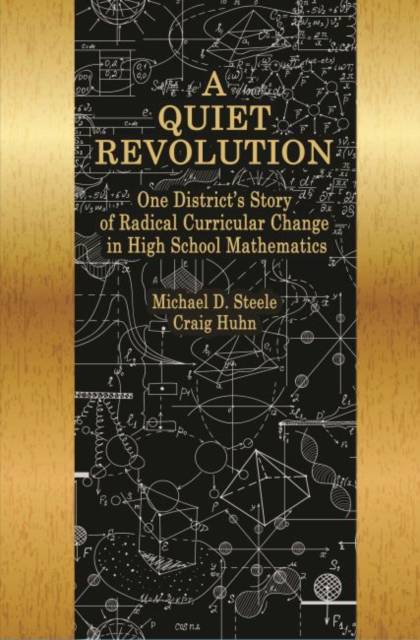
- Retrait gratuit dans votre magasin Club
- 7.000.000 titres dans notre catalogue
- Payer en toute sécurité
- Toujours un magasin près de chez vous
- Retrait gratuit dans votre magasin Club
- 7.000.0000 titres dans notre catalogue
- Payer en toute sécurité
- Toujours un magasin près de chez vous
A Quiet Revolution
One District's Story of Radical Curricular Change in High School Mathematics
Michael D Steele, Craig HuhnDescription
Over the past thirty years, Holt High School in central Michigan has engaged in a quiet revolution that has transformed mathematics teaching and learning in the district. From its roots as a rural high school housed in a single building in the 1980s, the high school mathematics staff has grown an innovative, meaningful high school mathematics curriculum that sees nearly every student in the district completing the equivalent of Precalculus. Tracking was dropped in favor of an evolving suite of supports designed to promote student success in unifying, rather than segregating, ways. Mathematics classrooms in Holt are discourse-rich environments where teachers and students explore meaningful uses for mathematics as they reason and problem solve together. This transformation took place and persists amidst changing professional partnerships, shifting district demographics, increasing accountability measures at the state and national level, and turnover in teaching staff and district leadership.
In this book, we explore the case of Holt High School though an exploration of how the mathematics curriculum has shifted over the past thirty years, and the conditions and supports that have been put in place in the district to make this work fruitful and sustainable. The story includes successes, failures, celebrations and challenges as we chronicle Holt's high school mathematics evolution. Guiding questions, protocols, and reflective activities are provided for teachers and district leaders to begin the challenging conversations in their own district that lead to meaningful change.
Spécifications
Parties prenantes
- Auteur(s) :
- Editeur:
Contenu
- Nombre de pages :
- 220
- Langue:
- Anglais
Caractéristiques
- EAN:
- 9781641131827
- Date de parution :
- 19-03-18
- Format:
- Livre relié
- Format numérique:
- Genaaid
- Dimensions :
- 156 mm x 234 mm
- Poids :
- 485 g

Les avis
Nous publions uniquement les avis qui respectent les conditions requises. Consultez nos conditions pour les avis.






